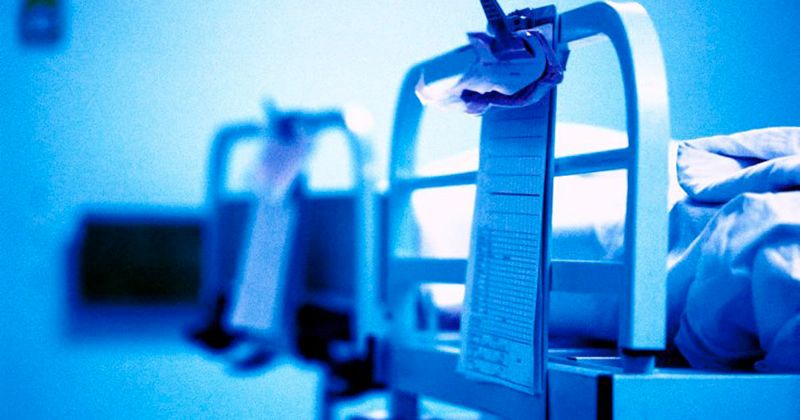‘May be benefit’ with higher dose corticosteroids for severe to critical COVID-19
Key takeaways:
- 12 mg per day vs. 6 mg per day corticosteroids demonstrated lower risk for mortality.
- Risk for mechanical ventilation and ventilation duration were also lower among those receiving higher dose corticosteroids.
Evidence from multiple trials suggests that higher dose corticosteroids “probably” lessen the mortality risk among patients with severe to critical COVID-19, according to study results published in Annals of the American Thoracic Society.

“For the everyday clinician treating patients with severe to critical COVID-19, our findings suggest that there may be benefit in choosing relatively higher dose corticosteroids rather than lower dose regimens,” Tyler Pitre, MD, respirology fellow at the University of Toronto, and Dena Zeraatkar, PhD, assistant professor at McMaster University, told Healio. “However, these decisions should be made considering patient’s values and preferences, and also the patient themself, namely whether they have comorbid conditions that would make higher dose corticosteroids more risk (ie, diabetes, gastrointestinal bleeding).”


“Most of the trials we included did not have many co-interventions that also immunosuppressed patients,” Pitre and Zeraatkar added. “For example, these days, we often give patients corticosteroids with tocilizumab and/or baricitinib, both of which are immunosuppressive medications. It is unclear whether higher dose corticosteroids in this setting is appropriate. It is also unclear whether using higher dose corticosteroids is as effective in vaccinated patients as well, of which almost no patients in our study were vaccinated.”
In a systematic review of five databases from inception to August 2022, Pitre, Zeraatkar and colleagues analyzed 20 randomized controlled trials (n = 10,155; median age, 61 years; 64% men) of patients with severe to critical COVID-19 to understand whether a higher dose (12 mg/day) or lower dose (6 mg/day) of corticosteroids for 10 days shows more benefits in this patient population.
As Healio previously reported, early results from the RECOVERY trial showed that low-dose dexamethasone reduced the risk for death by one-third in ventilated patients with COVID-19.
Researcher figured out certainty of evidence from the included studies by using the Grading of Recommendations Assessment, Development and Evaluation approach.
Of the total cohort, every patient was receiving oxygen therapy, whereas only about one-fifth were on mechanical ventilation.
Frequently used corticosteroids included dexamethasone (10 trials) and methylprednisolone (eight trials), followed by hydrocortisone in three trials.
In terms of mortality, researchers observed moderate certainty evidence from 18 studies (n = 8,438) demonstrating a decreased risk with higher dose corticosteroids rather than lower dose corticosteroids (RR = 0.92; 95% CI, 0.85-0.98; absolute risk difference, 14 fewer deaths per 1,000; 95% CI, –26 to –2).
Notably, this result differs from with recent findings from the RECOVERY trial, which Healio previously covered, demonstrating that higher dose corticosteroids heightened the risk for mortality in patients hospitalized with COVID-19 who need oxygen therapy compared with usual care/low dose corticosteroids.
“This is an important study (from the RECOVERY platform trial group),” Pitre and Zeraakatar told Healio. “The patients included in this study were different from ours in important ways, namely they only required simple oxygen or none (although 99% required simple oxygen). They had less severe disease. This population of patients also received other immunosuppressant medications and a significant proportion were vaccinated. There is a secondary study that will be published from the same group for patients who need noninvasive ventilation and mechanical ventilation to see if there is any difference in the effect of higher dose regimens.”
Based on low certainty evidence, the risk for mechanical ventilation was lower among those taking higher dose corticosteroids vs. lower dose corticosteroids (RR = 0.91; 95% CI, 0.87-1.03; absolute risk difference, 11.6 fewer per 1,000; 95% CI, –23.2 to 6.9) in 12 studies (n = 5,173), according to researchers.
Researchers additionally reported 2.6 less days (95% CI, –6.1 to 0.8) on mechanical ventilation with higher dose corticosteroids vs. lower dose corticosteroids based on low certainty evidence from four studies (n = 411).
When evaluating low certainty evidence on hospital length of stay from nine studies (n = 7,489), no benefit was found with higher dose corticosteroids (mean difference, 0.34 more days; 95% CI, –0.74 to 1.46), according to researchers.
Lastly, using nine studies (n = 2,311) with very low certainty evidence, researchers reported uncertainty regarding how higher dose corticosteroids impact nosocomial infections (RR = 0.9; 95% CI, 0.83-0.97; 16.7 fewer infections per 1,000; 95% CI, –25 to –5.4).
“Future studies will need to take in account vaccine status and concomitant immunosuppressive medications,” Pitre and Zeraakatar told Healio. “Although, the phenotype of severe COVID-19 has largely disappeared and the patients we included in earlier trials are not likely the same as patients included in recent trials. These are important factors to consider for both researchers and clinicians alike.”

